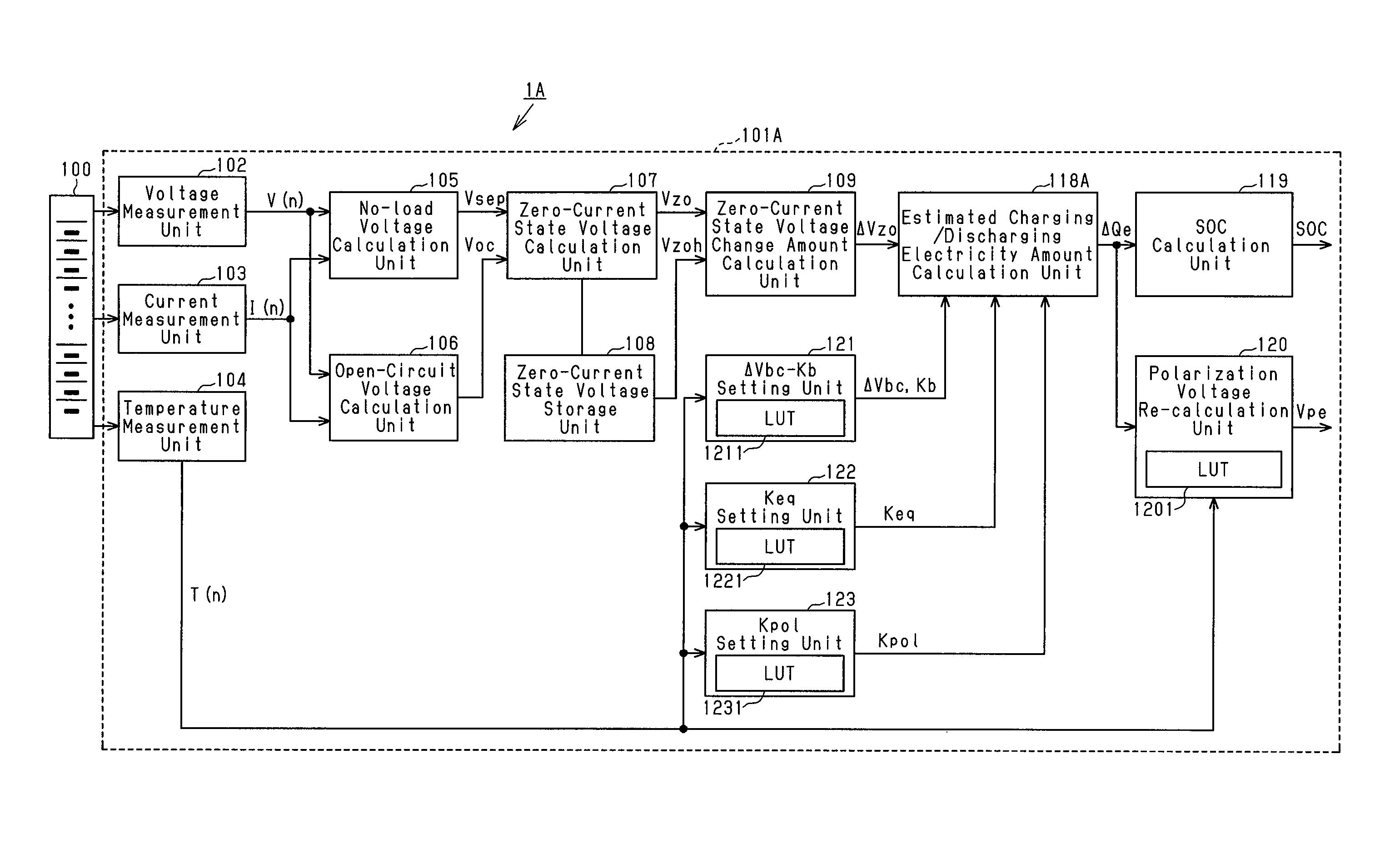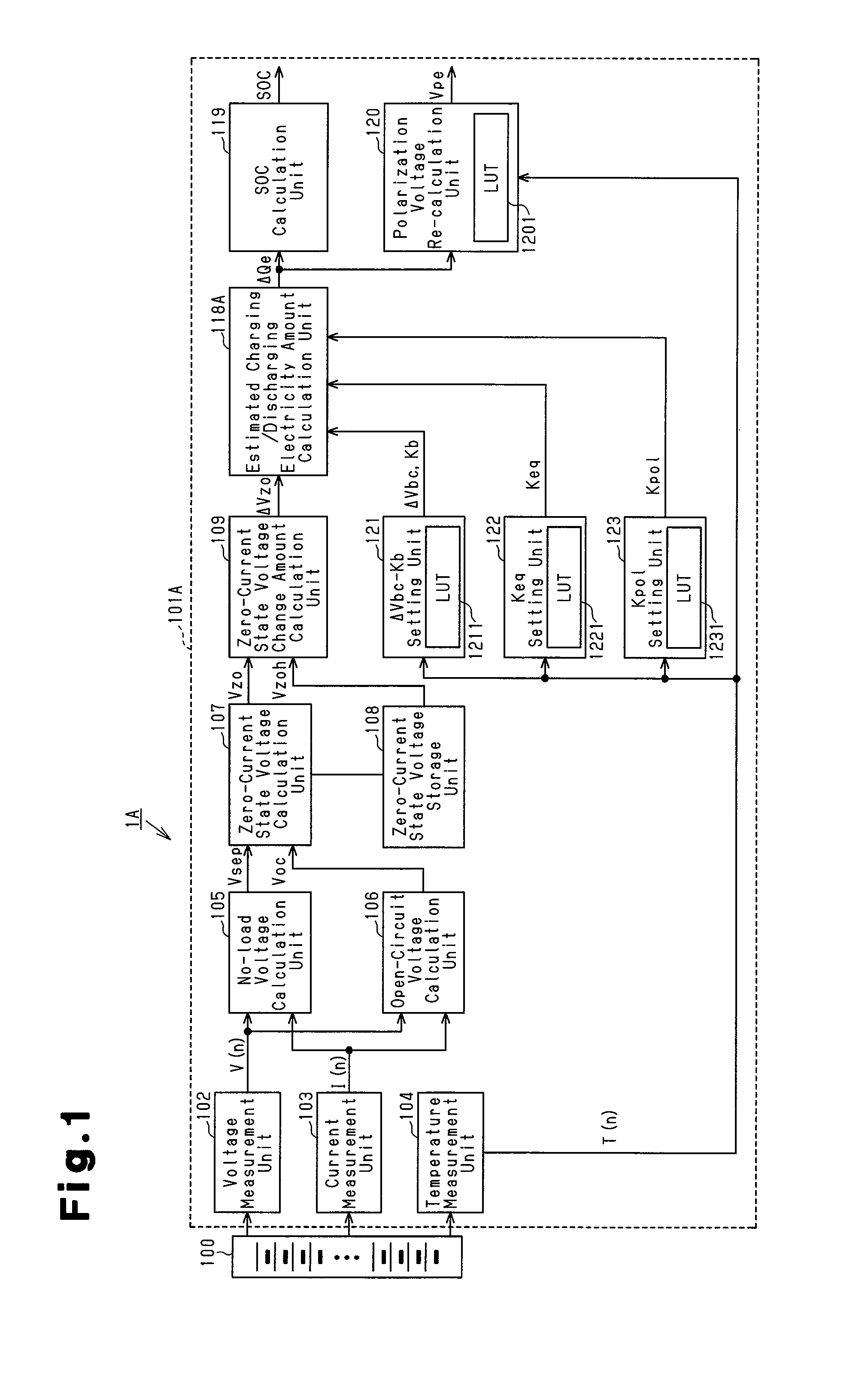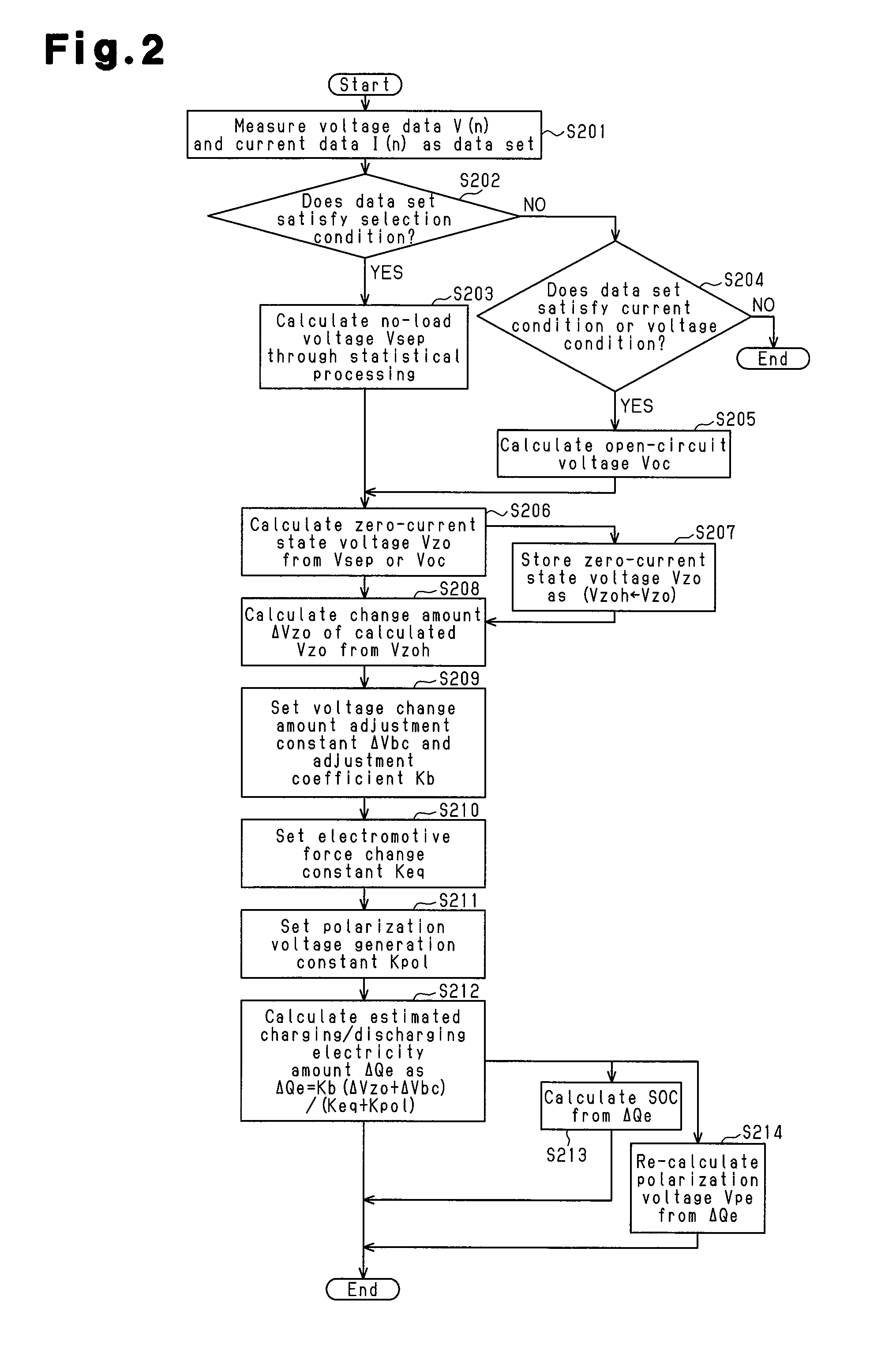Secondary battery charge/discharge electricity amount estimation method and device, secondary battery polarization voltage estimation method and device and secondary battery remaining capacity estimation method and device
a technology of secondary battery and electricity amount, which is applied in the direction of battery/fuel cell control arrangement, instruments, electrochemical generators, etc., can solve the problems of increasing the cost, no other way than to use an inexpensive current sensor having a relatively low precision, and the estimation method is not easy to achieve. , to achieve the effect of prolonging the life of the battery and improving the accuracy of the soc estimation
- Summary
- Abstract
- Description
- Claims
- Application Information
AI Technical Summary
Benefits of technology
Problems solved by technology
Method used
Image
Examples
first embodiment
[0082]FIG. 1 is a block diagram showing an example structure for a battery pack system according to a first embodiment of the present invention. In FIG. 1, a battery pack system 1A includes a battery pack 100 and a battery ECU 101A including an SOC estimation apparatus of the present invention which is part of a microcomputer system.
[0083]The battery pack 100, mounted for example on an HEV, is formed by a plurality of battery blocks that are electrically connected in series. Each battery block is formed by a plurality of cells or battery modules, e.g., nickel-metal hydride batteries, which are electrically connected in series in order to obtain a predetermined output to a motor.
[0084]The battery ECU 101A includes a voltage measurement unit 102 for measuring a terminal voltage for each battery block in the battery pack 100 detected by a voltage sensor (not shown) in predetermined sampling cycles as voltage data V(n), a current measurement unit 103 for measuring a charging / discharging...
second embodiment
[0109]FIG. 3 is a block diagram showing an example structure of a battery pack system 1B according to a second embodiment of the present invention. In FIG. 3, the components having the same structure and functions as the components of the first embodiment illustrated in FIG. 1 will be given the same reference numbers as those components and will not be described.
[0110]A battery ECU 1B of the present embodiment calculates an estimated charging / discharging electricity amount ΔQe not only by using a zero-current state voltage change amount ΔVzo as in the first embodiment but also by obtaining a time-dependent voltage change amount ΔVbp(th) from a stored polarization voltage Vph and a storage time th and using the time-dependent voltage change amount ΔVbp(th) instead of using a voltage change amount adjustment coefficient ΔVbc.
[0111]In FIG. 3, an estimated charging / discharging electricity amount ΔQe from an estimated charging / discharging electricity amount calculation unit 118B is input...
third embodiment
[0120]FIG. 6 is a block diagram showing an example structure of a battery pack system 1C according to a third embodiment of the present invention. In FIG. 6, the components having the same structure and functions as the components of the first and second embodiments illustrated in FIGS. 1 and 3 will be given the same reference numbers as those components and will not be described.
[0121]A battery ECU 1C of the present embodiment calculates an estimated charging / discharging electricity amount ΔQe not only by using a zero-current state voltage change amount ΔVzo as in the first embodiment but also by calculating an electromotive force Veq1 from a zero-current state voltage Vzo and a polarization voltage Vpol, obtaining an electromotive force change amount ΔVeq from a stored electromotive force Veq1, and using a value obtained by dividing an electromotive force change coefficient ΔVeq by a measured charging / discharging electricity amount ΔQm obtained from current data I(n) instead of us...
PUM
 Login to View More
Login to View More Abstract
Description
Claims
Application Information
 Login to View More
Login to View More - R&D
- Intellectual Property
- Life Sciences
- Materials
- Tech Scout
- Unparalleled Data Quality
- Higher Quality Content
- 60% Fewer Hallucinations
Browse by: Latest US Patents, China's latest patents, Technical Efficacy Thesaurus, Application Domain, Technology Topic, Popular Technical Reports.
© 2025 PatSnap. All rights reserved.Legal|Privacy policy|Modern Slavery Act Transparency Statement|Sitemap|About US| Contact US: help@patsnap.com



